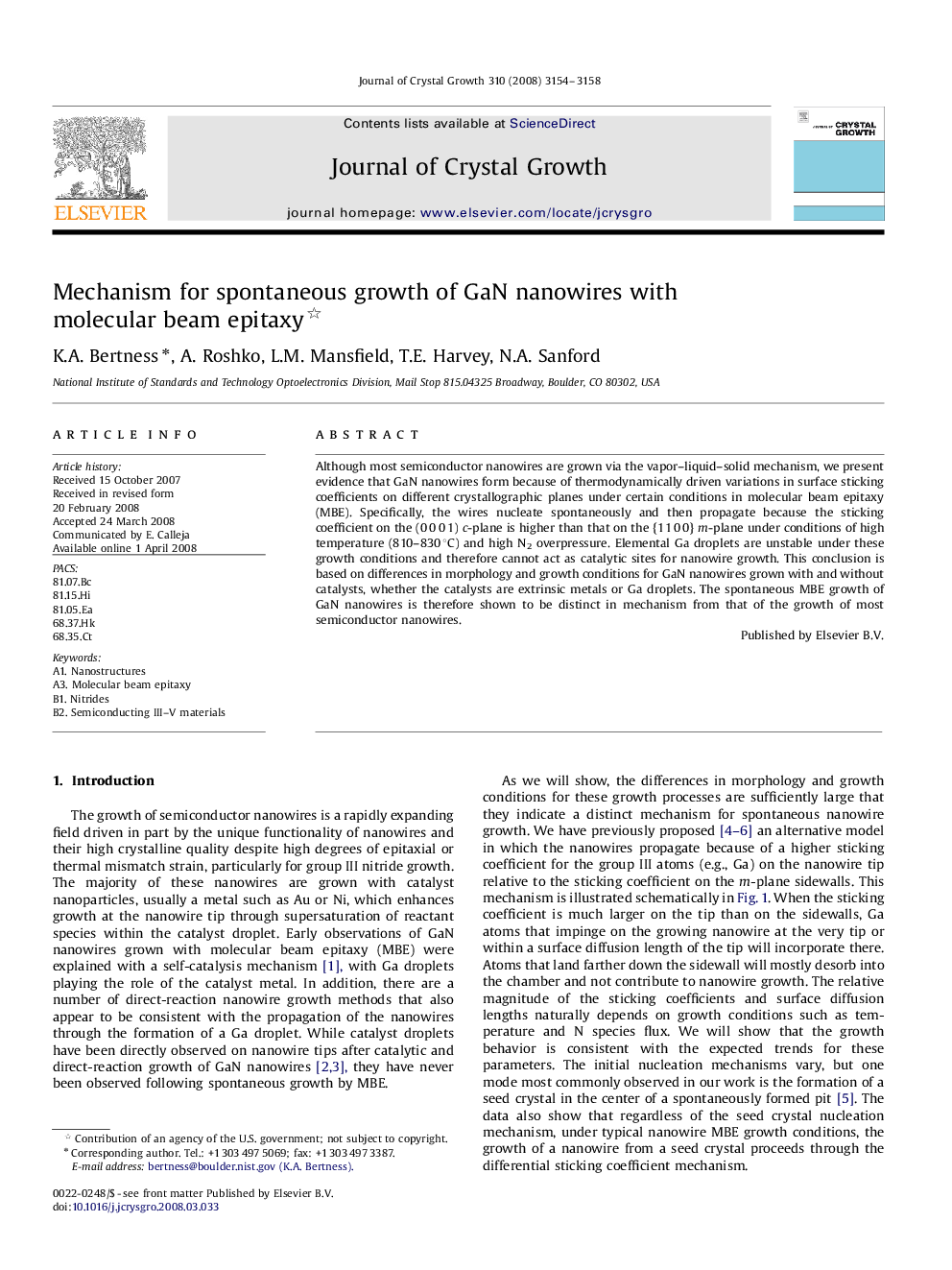| Article ID | Journal | Published Year | Pages | File Type |
|---|---|---|---|---|
| 1795199 | Journal of Crystal Growth | 2008 | 5 Pages |
Although most semiconductor nanowires are grown via the vapor–liquid–solid mechanism, we present evidence that GaN nanowires form because of thermodynamically driven variations in surface sticking coefficients on different crystallographic planes under certain conditions in molecular beam epitaxy (MBE). Specifically, the wires nucleate spontaneously and then propagate because the sticking coefficient on the (0 0 0 1) c-plane is higher than that on the {1 1 0 0} m-plane under conditions of high temperature (810–830 °C) and high N2 overpressure. Elemental Ga droplets are unstable under these growth conditions and therefore cannot act as catalytic sites for nanowire growth. This conclusion is based on differences in morphology and growth conditions for GaN nanowires grown with and without catalysts, whether the catalysts are extrinsic metals or Ga droplets. The spontaneous MBE growth of GaN nanowires is therefore shown to be distinct in mechanism from that of the growth of most semiconductor nanowires.
